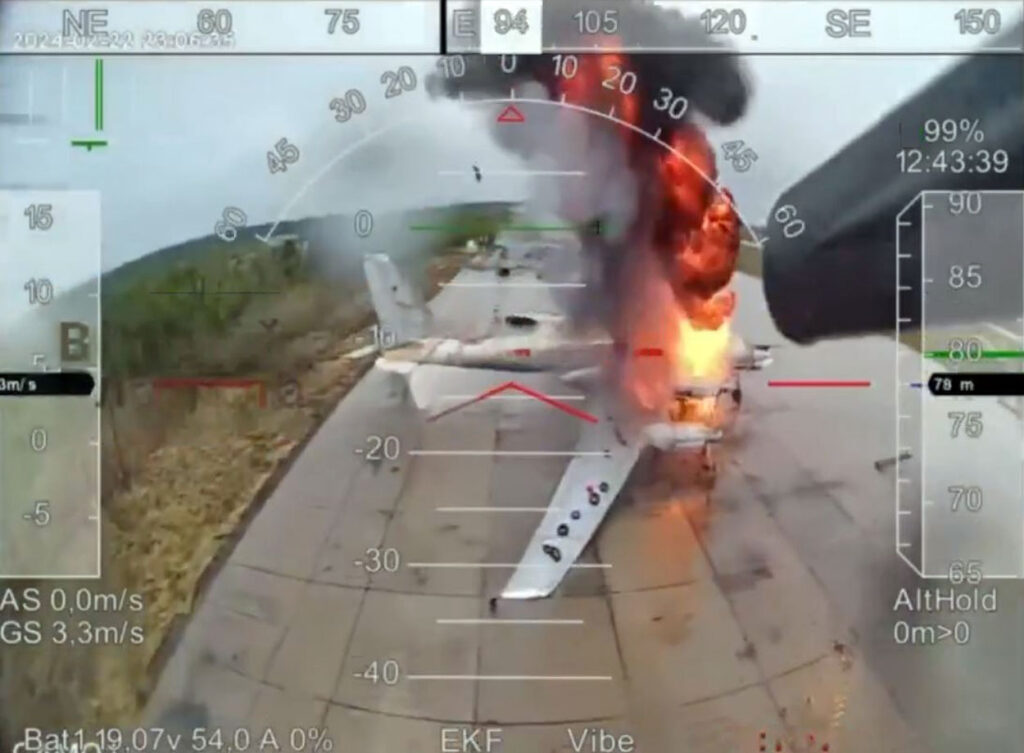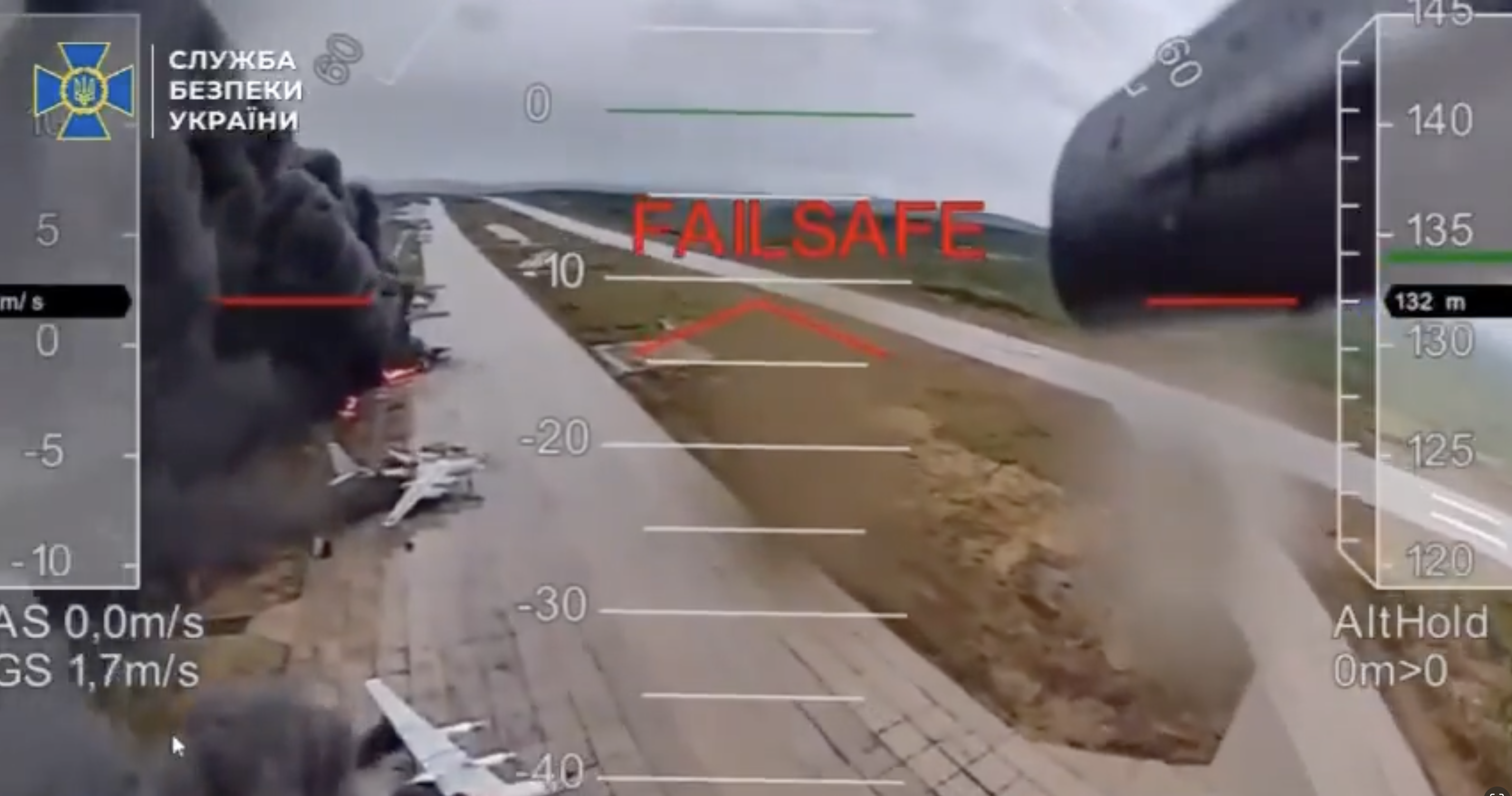Russian Easter vodka binges delayed Ukraine’s covert bomber-killing drone strike, SBU reveals

Ukraine’s Security Service head just explained exactly how Ukraine had smuggled attack drones into Russia and hit four military bases simultaneously in their most audacious operation yet.
The 1 June mission—codenamed “Spider Web”— hit 31 and destroyed 21 Russian aircraft worth over $7 billion. That’s roughly a third of Russia’s cruise missile carriers wiped out in a single coordinated strike.
But the real story isn’t the destruction. It’s how Ukrainian intelligence spent 18 months building a fake logistics company inside Russia to pull it off.

Satellite images reveal wreckage of Russian strategic bombers after Ukraine’s Spiderweb drone operation deep in Russia
Ukrainian spies rent office space next to enemy headquarters
SBU chief Vasyl Maliuk revealed the operation’s mechanics in a recent interview. His agents didn’t just sneak across the border—they set up shop in Chelyabinsk, renting offices and warehouses practically next door to the local FSB headquarters.
Why Chelyabinsk? The industrial city over 2000 km from the front line provided perfect cover for a logistics operation. The Ukrainians bought five cargo trucks, hired Russian drivers, and started moving equipment.
The weapon? What Maliuk calls “hunting lodges”—wooden structures mounted on truck beds, equipped with solar panels and EcoFlow batteries to continuously power concealed drones. Russian customs saw camping gear. Inside were 117 combat drones waiting to strike.

Russians drinking vodka delayed a covert op
The original plan called for a May strike. What went wrong? Russian drinking culture.
“We planned to do this before May 9, but they went on a drinking binge during Easter,” Maliuk explained.
The Ukrainian handlers couldn’t reach their Russian drivers for weeks. “One driver was missing, then another. Then May 1st—their May holidays—and they’re lying around for a week.”
The operation lost an entire month to spring festivities.

Spiderweb operation: This is how Ukrainian drones destroy Russian bombers that attack Ukraine
The moment everything almost collapsed
Picture this: Ukrainian agents preparing their weaponized hunting lodges when someone accidentally hits the wrong button. The roof opens. A 63-year-old Russian truck driver sees rows of military drones lined up for combat.
Panic. The field agents called headquarters immediately. “We have an emergency situation. What are we going to do?”
Malyuk’s solution? Instant cover story. Tell the driver these are wildlife surveillance drones used to track animal populations and catch poachers. The 63-year-old knew nothing about modern technology. He bought it. A bonus payment helped seal the deal.

The Russian drivers who transported the drones never knew what they were carrying. They’re now in Russian detention centers, according to Maliuk, facing torture for crimes they didn’t know they were committing.
“In reality, they did nothing illegal and there was no intent in their actions,” he said. “We paid them very generously.”
All Ukrainian operatives who organized the mission have been evacuated from Russia with new identities.

Frontline report: Ukrainian Spiderweb operation triggers mass paranoia as Russia hunts threats in every truck
Ukraine hit Russian bombers that attack civilians
The targets weren’t random. These aircraft form part of Russia’s nuclear triad—the bombers that have been launching cruise missiles at Ukrainian cities and infrastructure throughout the war.
The strike hit A-50 early warning aircraft and Tu-95, Tu-22M3, and Tu-160 strategic bombers across four bases: Belaya, Dyagilevo, Olenya, and Ivanovo. The operation required coordination across three time zones.
At the predetermined moment, the hunting lodge roofs opened remotely. The drones emerged and flew to their targets.
Lessons from drug cartels
How did Ukrainian intelligence learn to smuggle military equipment past Russian customs? They studied international drug cartels, Maliuk said in the interview.
Russian customs corruption made the mission possible, he believes. His agents had to navigate what he called “seven circles of hell” due to international sanctions, but corrupt officials provided the opening they needed.
Maliuk also noted the parallels between this operation and the 2022 Crimean Bridge attack, where Ukraine used a truck loaded with 21 tons of explosives.
“If you read between the lines and look professionally, I think many noticed certain parallels.”
Read also
-
Frontline report: Ukrainian Spiderweb operation triggers mass paranoia as Russia hunts threats in every truck
-
Frontline report: Ukrainian spies create multi-country network surrounding Russia to execute its historic Operation Spiderweb
-
Spiderweb operation: This is how Ukrainian drones destroy Russian bombers that attack Ukraine